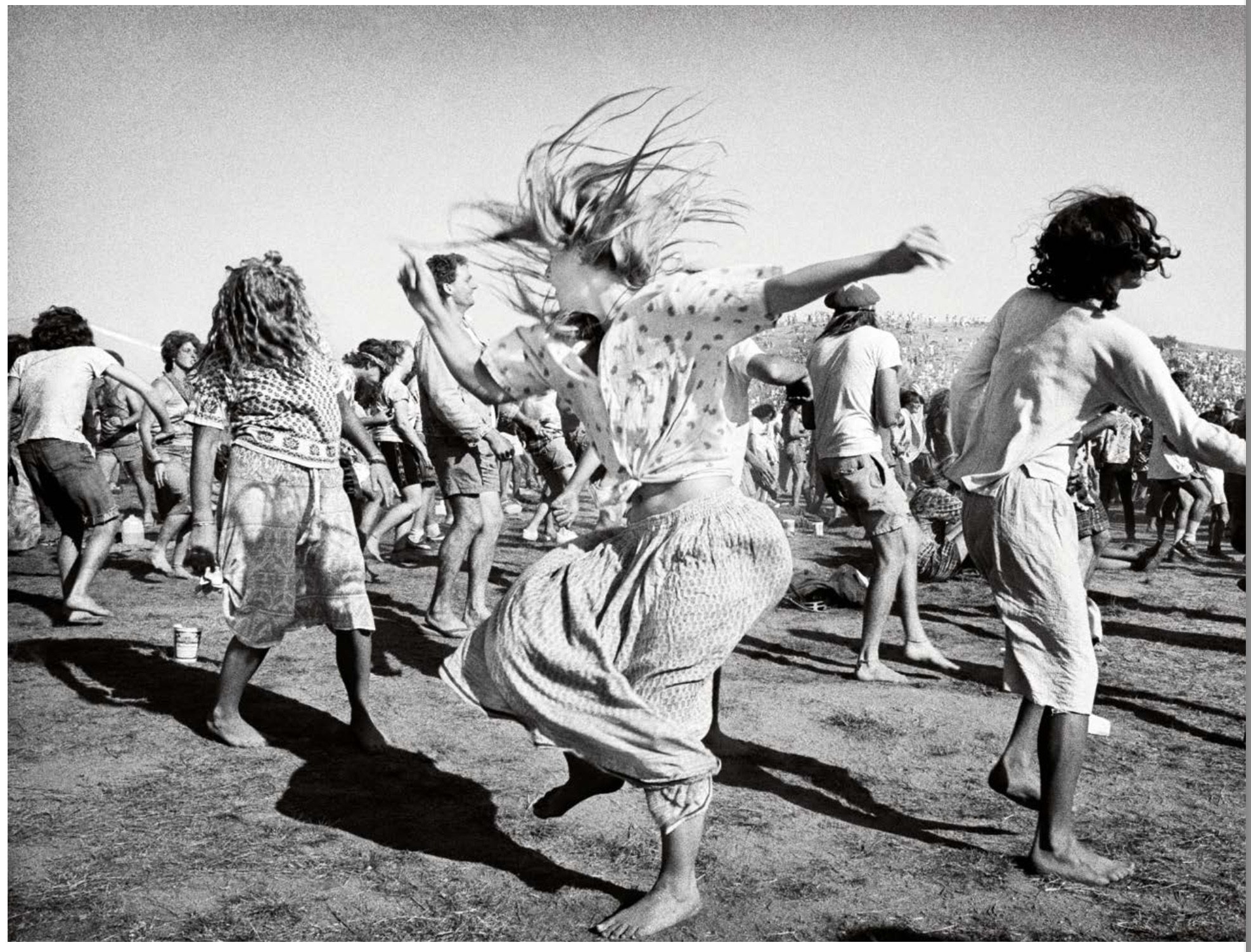by Rita Plush
“RetroBlakesberg Volume One: The Film Archives”
by Jay Blakesberg (Photographer), Ricki Blakesberg (Curator)
Photography, Rock Out Books

Grateful Dead concert, 1987 by Jay Blakesberg
When the pandemic hit in 2020, many folks spent their isolated hours cleaning out closets and bureau drawers. Others decided learning a new language was the way to get through it. Not Ricki Blakesberg.
Daughter of renowned, San Francisco-based Photojournalist Jay Blakesberg (a native summer son of Ocean Beach), she used her time to scan her dad’s vintage film photographs (close to 100,000) of the pop music scene. The collection goes from the late seventies to 2008, when, a professional photojournalist, he shot his last roll of film before transitioning to digital.
Ricki was taken with the look of film photos and their unique ability to “capture the essence of a moment, the warmth … that only film can create.” As she was compiling her father’s body of early work, she realized she had “stumbled onto a retrospective of fashion, music and lifestyle from the pre-internet past … that continues to resonate into the digital era and will resonate long after.”
The Grateful Dead, Rolling Stones, Phish, Nirvana, Neil Young, Blakesberg has photographed them all, and then some. His music photography has been published in hundreds of magazines including Time, Vanity Fair and Rolling Stone. He has more than 200 CD packages out and a slew of coffee table books. The man has shot some film.
With plenty of moxie, and his dad’s camera slung around his neck, he followed Jorma Kaukonen of Hot Tuna fame into a late-night deli. “‘Hey Jorma, how about a smile?’ and he gave me a big wide-eyed grin with his gold tooth exploding brilliantly.” The photo was published in Relix, his favorite music magazine. He was still 16.
I was in my forties then, listening to my teen son blast Jorma’s music loud – “Turn it down!” – and long. He named his dog Jorma, an homage to his idol. Blakesberg’s accounts of that era brought back my mom-worries then; the pot and drugs teens were banging around with. Would my son get caught up in it? Ricki was right: the past does resonate.
At the No Nukes rally, Battery Park, ’79, the young intrepid photographer, “just five weeks from graduating from high school,” spied a press pass on the ground, snatched it up and before Jane Fonda could wrap up her speech, Blakesberg, side-stage, the smell of pot strong in the springtime air, chronicled history.
Sex, drugs and rock and roll! Freedom, experimenting, no holds barred, Blakesberg dropped acid with his pals and got busted for selling at 19. During his year in prison, inventive as ever, he grew alfalfa sprouts in milk cartons in his cell so he could eat healthy.

Crosby, Stills & Nash, 1979 by Jay Blakesberg
It was the eighties and his hometown network of friends was expanding. “Like-minded freaks” he met in concert parking lots became part of his “tribe,” following the call to adventure. “We were young and the whole world was in front us.”
I was drawn in by his frank, open, in-the-moment voice, imagining a Dead concert: an underground drug dealer gives him 50 hits of acid with which he “dosed all his friends.” Stoned to the gills, Blakesberg can only “pull off” a few in-focus and properly exposed shots, out of a possible 36. And the beat goes on.
Back to the dealer who anoints the eager stoner as his Union County, New Jersey, rep. A few thousand hits land on his father’s doorstep, which Blakesberg then sells to his high school chums. A nice cash-flow for as long as it lasted. But he was put him back in the clink for another 12 months. Blakesberg didn’t say if he tamped down using then. In any case, by the nineties, he was a “busy, in-demand” commercial photographer, eager to expand his “skillset and toolkit.”
His artistic development is interesting reading. He studied Richard Avedon and Annie Leibovitz in order to branch out into portrait photography and define his own personal style. Not that he intended to chuck the “new scene that existed somewhere between punk and pop.” (Sinéad O’Connor and Ice-T, Iggy Pop.) He found live concert photography “exhilarating and rewarding … the unknowns … you wouldn’t even be able to dream up until they occurred.” And, it gave him the chance to photograph music fans, “the grooviest people on the planet.”
They groove aplenty on the glossy pages, in color photos, intense and vivid; black and white, where color would have been an intrusion, a distraction. Eyes closed, tripping in tie-dyes and dirty feet. A guitarist, hair swinging in the air, arm a blur, somewhere between movement and stillness. The photos evoke a time and place, eras gone, but not forgotten.
I had a little trouble getting my hands on this did-it-all/telling-it-all book about pop music through four decades. The publisher was out of review copies, and my library didn’t have it in circulation. I put in a special order for it and I’m glad I made the effort.
Ricki Blakesberg’s lovingly archived photos, and her father’s no-holds-barred narration, make both a lively read, and a visual feast, for readers who were actually in it, and those, like this reviewer, who know the music from the margins. The archivist used her lockdown well.































